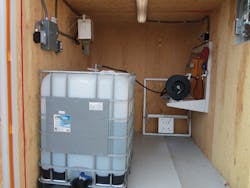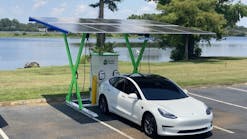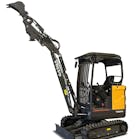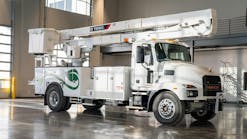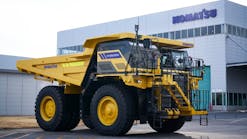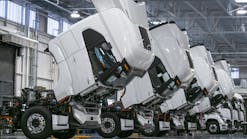Go to Construction Equipment Institute for more on fleet asset management.
The technological evolution of equipment has increased efficiency and reduced fuel consumption and exhaust emissions, allowing manufacturers to introduce even cleaner-burning engines and alternatively fueled machines to address global sustainability concerns.
Swiftly increasing are demands from business investors and society itself for organizations to develop and implement sustainability initiatives. To do so, an organization must instill sustainability as a mindset throughout the organization. It has no definable limits, yet achieving potential possibilities requires intense effort, monitoring, and management.
The executive branch of the organization holds the responsibility to determine the specific level or tier levels of sustainability they wish to achieve. They must research, define, and establish over-arching sustainability goals consistent with the organization’s mission and then create policy that will become the foundation of the organization’s sustainability efforts. All functions of the organization should be included within the discussion to ensure a steady, cohesive, and consistent effort to identify objectives.
Typically, the discussion includes broad overarching topics: What functions of the organization will be included? What do we want to accomplish over the next three to five years and beyond? How will we demonstrate our sustainability credentials in a market where these are becoming increasingly important to clients, and how will we maintain a good return on our investment required for the initiative?
How to "green" an equipment fleet
The equipment manager is often appointed as the sustainability official for the organization and is responsible for establishing the processes and procedures to “green the fleet.”
This task encompasses all equipment and vehicles utilized throughout the organization, the fuel they burn, and the lubricants utilized. It includes the shop and maintenance facilities as well as the tooling utilized for these maintenance requirements. It includes the waste stream and disposition of used fluids and depleted materials.
- Enlist a well-rounded team, inclusive of all functions and levels of the organization. The plan should address the current fleet’s average emissions tier level and the organizational vision on how to strategically reduce emissions and the use of fossil fuels as machines reach the end of their lifecycle. It should address implementation of renewable alternative fuels such as synthetic and biodiesel, natural gas, hybrid, and fully electric equipment. It should include a well-written and enforceable idle policy, the transition to synthetic fluids and lubricants, aqueous parts cleaners, environmentally friendly aerosols, and reusable maintenance shop consumables.
- Review equipment by type as technological advancements have occurred faster in support vehicles and equipment as well as in secondary and associated equipment than in primary/critical and smaller miscellaneous equipment. Upon acquisition or life cycle replacement, a detailed review of its operating requirements should be undertaken to ensure the right size and type of equipment is acquired.
- Consider the geographical working environment: urban versus suburban versus rural. Equipment life cycles, duty assignments, and the preliminary specifications should be established to meet the requirement. Once completed, alternatively fueled/powered equipment available can be identified and bid specifications developed to facilitate the acquisition of such alternatively fueled/powered equipment.
- Alternative fueled/powered equipment and its technology will require highly specialized maintenance practices and equipment. Organizations must plan and design solutions to accommodate those requirements.
- The average size of the equipment will not significantly change, allowing continued utilization of existing facilities. Space will be required, however, for additional shop equipment and specialized component access.
- Specialized fueling facilities will be needed to accommodate alternative fuels. Space requirements and anticipated growth of fuel usage needs to be planned well in advance of initial acquisition.
- Gaseous-fueled equipment such as compressed, liquified, and renewable natural gas will require dedicated parking areas with access to fueling equipment, leak detection monitors, and possibly exhaust extraction systems.
- The electrification of equipment requires dedicated parking and access to highly specific charging systems, and possibly larger overall facility electrical systems may be require upgrades to support the required charging grid.
How to handle hazardous waste
“Cradle to grave” is often associated with the use and disposition of used fluids and depleted materials. Everyone within the organization holds the responsibility to ensure proper disposition compliance.
Dependent upon its designation—hazardous or nonhazardous—there are governing rules that establish the requirements to dispose of such used fluids and depleted materials. A detailed disposition and spill response plan should include containment and cleanup steps, measures, and checklists; reporting and compliance steps; staff requirements and responsibilities; as well as mitigation strategies and post-event review and training.
The capital cost of equipment should be expected to increase as technologies advance. These increases will be dependent upon the type and level of the technology, but they should stabilize over time. Such improved productivity and potentially decreased maintenance requirements of this equipment means that the increased capital cost may be offset by decreased operational cost.
How PM will change with technology
Preventive maintenance programs will require review and modification to accommodate the anticipated changes in PM cycles. Although some systems may require similar PM intervals as existing equipment, others may increase while others decrease. Careful consideration should be given to these new requirements.
Alternatively fueled equipment changes how such equipment is fueled and maintained while dispatched on a project site. Consider enlisting a contracted fueling service for liquid or gaseous fuels, as well as provisions for installation of electrical charging stations. Plans should be discussed early in the project planning phase, long before commencement of onsite activities. Similar provisions for onsite maintenance and repairs should be considered as well during this planning phase.
Operational, technical, and safety training programs will require modification to include the necessary operator and technician training for the specific fuel/power of the new equipment. Also shop and facility equipment will require updating of procedures for spill response, hazard communication, and the utilization of the specialized shop and fueling equipment. All support staff should be included within as these positions regularly interact with the equipment and its operation.
Sustainability mandates and initiatives are here to stay, and equipment organizations—small, medium, and large—need to take positive action to address and implement a credible sustainability plan to remain competitive in the marketplace.
